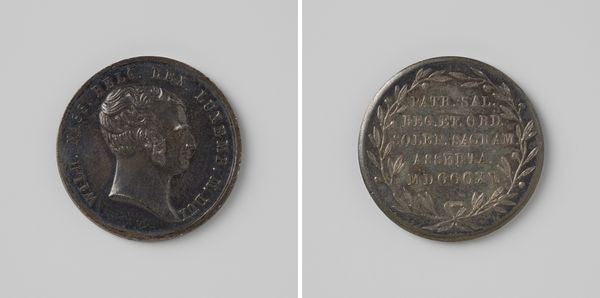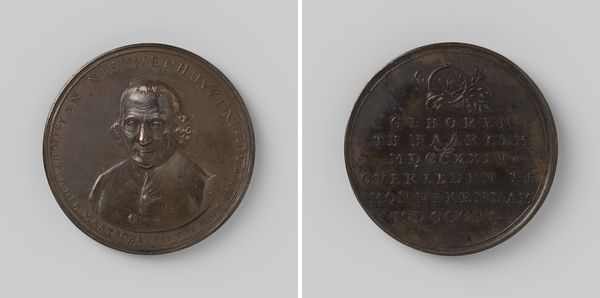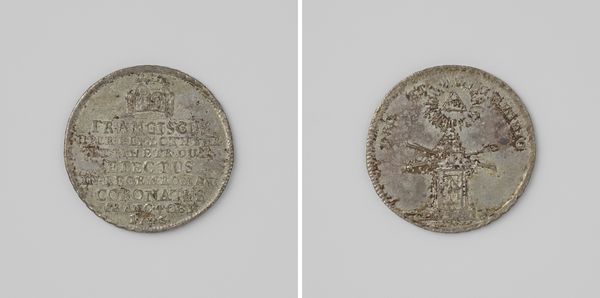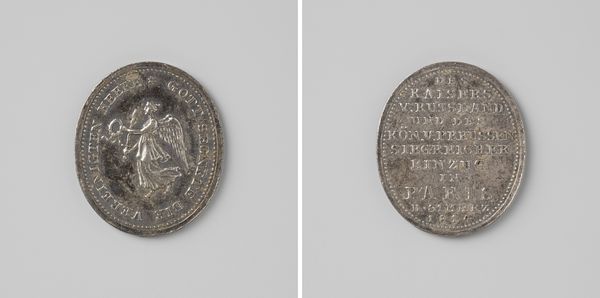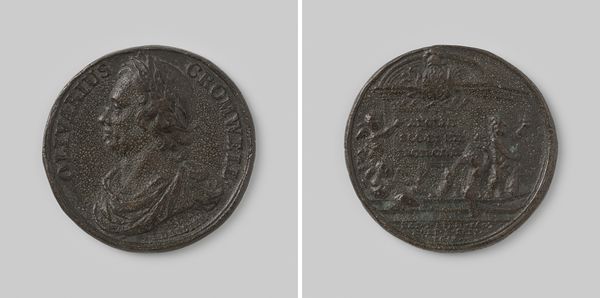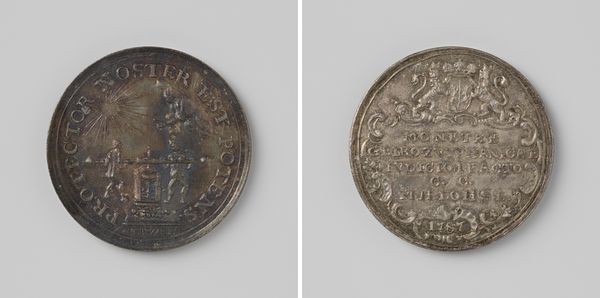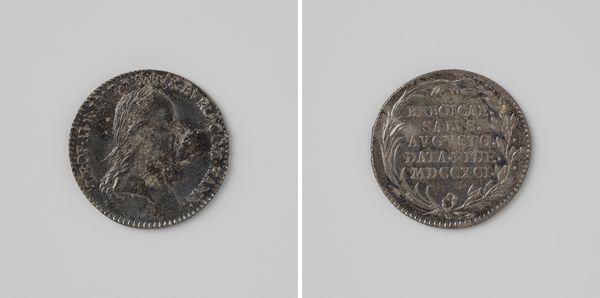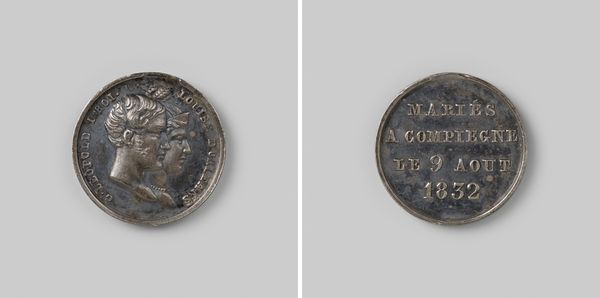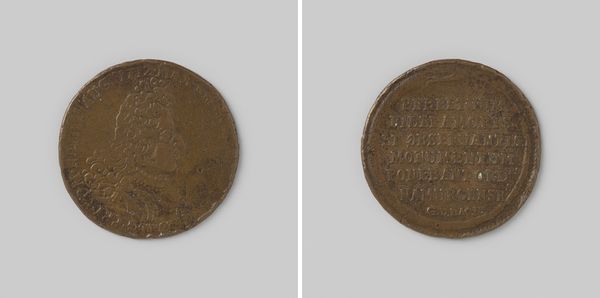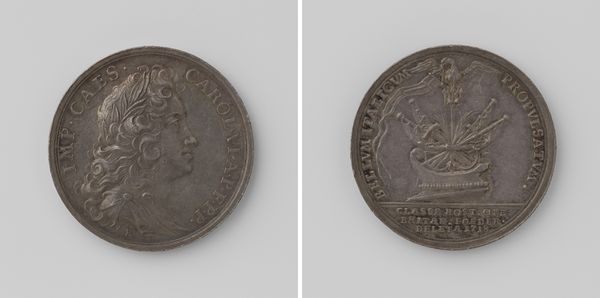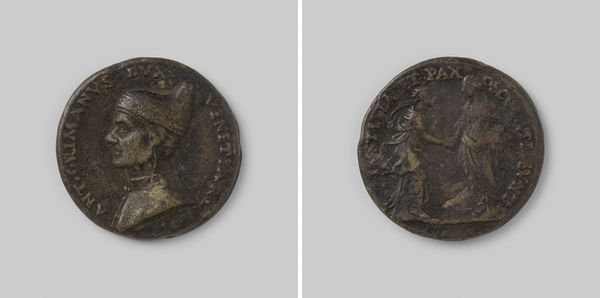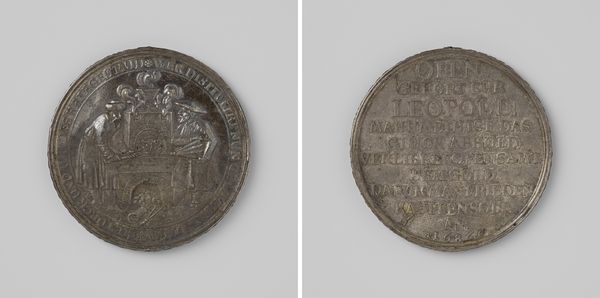
Strooipenning bij de inhuldiging van Willem Frederik als Koning Willem I te Brussel 1815 1815
0:00
0:00
metal, relief, sculpture
#
portrait
#
neoclacissism
#
metal
#
sculpture
#
relief
#
sculpture
Dimensions: diameter 2.3 cm, weight 6.55 gr
Copyright: Rijks Museum: Open Domain
Curator: Here we have a commemorative medal crafted in 1815, celebrating the inauguration of Willem Frederik as King Willem I in Brussels. The material appears to be metal, probably silver. Editor: My initial impression is its somber tone. Despite the celebratory nature of its creation, the cool metallic sheen and the neoclassical style impart a sense of formal, almost austere, authority. Curator: Indeed, and examining the object further through an intersectional lens reveals that the neoclassical style reinforces the self-representation of the monarchy. Think of Jacques-Louis David's portraits of Napoleon: the emperor as a Roman consul, full of symbols and coded meaning. These coins functioned similarly in a post-revolutionary environment where inherited aristocratic authority was under scrutiny. Editor: Precisely. Look at the crisp lines, the relief is sharply defined. Note also the way the laurel wreath frames the text on the reverse; it adds to this calculated, deliberate aesthetic. What specific meaning do you find inscribed on the text-side of the coin? Curator: Inscribed are Latin phrases indicating the sacred nature of the king’s inauguration. We are seeing an intentional crafting of monarchical power through the iconography and language of the Roman Empire to present King Willem I as a leader with ancient, almost divine legitimacy. Considering the context of its production after the Napoleonic era, the desire for such manufactured legitimacy becomes very apparent. Editor: It is also remarkable how such symbolic weight is achieved in such a small object, probably a few inches in diameter. Each compositional decision magnifies this desired sentiment of immutable, inevitable authority. The obverse and reverse function almost as interlocking theses toward ideal governance. Curator: I think one can interpret this coin as more than a commemorative object. It served as a tactile form of propaganda and political rhetoric circulated at a critical juncture. It visually constructed King Willem I's role not just as a ruler but as an ordained leader sanctioned by both divine right and historical precedent. Editor: I concur. I walked in reading "cool metal" but I am now experiencing that it is far from affectless: I am also feeling its calculated message to reassure power and control in unstable times.
Comments
No comments
Be the first to comment and join the conversation on the ultimate creative platform.

